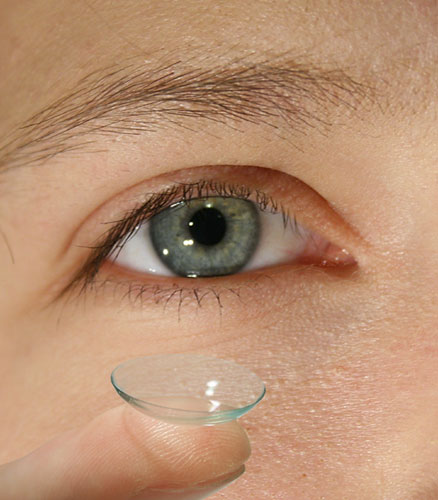The LASIK procedure
 Laser-assisted in situ keratomileusis, or (mercifully) LASIK is the most commonly performed laser vision correction surgery. In the general LASIK procedure, the eye surgeon numbs the eyeball with a topical solution or with an injectable anesthetic that completely blocks the pain-conducting nerve.
Laser-assisted in situ keratomileusis, or (mercifully) LASIK is the most commonly performed laser vision correction surgery. In the general LASIK procedure, the eye surgeon numbs the eyeball with a topical solution or with an injectable anesthetic that completely blocks the pain-conducting nerve.
After the eye is numb, a very thin, very sharp blade makes a cut across the front of the eye. The blade forms an eye flap of sorts that is cut on three sides. The flap is opened to expose the deeper layers of the cornea. With the cornea exposed, the laser is used to vaporize and reshape the cornea.
It is, after all, a misshapen cornea that leads to problems with refraction in the eye. Once the cornea is ideally shaped so that it can bend rays of light and focus them on the back of the eye (the retina), the flap is closed and allowed to heal. In almost all cases a suture (stitch) is not required.
Catch the wave
In researching LASIK, you may have heard of wavefront LASIK. This is the name given to the process by which sophisticated measurements are taken of the surface of the cornea. Wavefront takes a custom “picture” of each eye’s cornea making a unique map of its surface.
The idea of wavefront analysis is to better direct the laser during cutting and provide the best vision for each unique eye. While basic vision correction that is provided with traditional and wavefront LASIK may be indistinguishable, clinical reports seem to indicate that wavefront LASIK helps the patient see better at night or in situations which require strong contrast between objects.
An example of how contrast helps in the real world is reading a road sign in a moderate fog. Wavefront LASIK usually costs several hundreds of dollars more per eye than traditional LASIK, so you need to determine if night and high contrast vision is important to you.
The other vision correction surgery
The other major type of laser vision correction surgery is called PRK or photorefractive keratectomy. Instead of using a fine blade to cut the front of the eye, a laser is used to “burn” off the front of the eye instead. The eye surgeon then uses the laser to change the shape of the cornea similar to LASIK.
Because the eye surgeon uses the excimer laser from start to finish, the technique has earned the title, “no touch” laser eye surgery. On average though, “no touch” does not mean no pain. Patients often report significantly more eye pain when recovering from PRK than after LASIK.
The major advantage of PRK of LASIK is that it can be used on eyes with fairly thin corneas, which some people have. PRK can be used for patients with mild errors in refraction (slightly far- or near-sighted people), otherwise LASIK is usually the procedure of choice. One interesting exception in which LASIK is strongly preferred is in people that have had LASIK previously. Because LASIK tends to thin the cornea fairly substantially, people are often no longer candidates for a second LASIK but rather must have PRK.
Good, but not perfect
While the early years of vision correction surgery saw many complications and were fraught with problems, the current version of the LASIK procedure has been more or less perfected. However, that does not mean that LASIK is without possible complications.
The most common complications associated with LASIK are related to the flap that is formed in the front part of the eye. Sometimes the thin blade (called a microkeratome or simply microtome) makes an unusually shaped flap. This can inhibit proper healing. When the flap is returned to its original position, it is possible that dust and debris get trapped inside.
Small bits of dust are usually no problem but larger pieces can be a source of infection or slow healing. Also, if the flap is too thin and becomes wrinkled, the rippled corneal flap can interfere with vision. While these complications can occur, they usually occur very infrequently and can be corrected.
It is best to talk with your eye surgeon to determine which procedure is best for you. You should also ask about complications and realistic expectations for final vision. It is not uncommon for patients to achieve 20/20 vision or better after LASIK surgery. You can also use the initial visit to discuss cost. While demand for LASIK procedures had been heavy, it seems that the market is becoming saturated, so costs of LASIK have been dropping recently.
